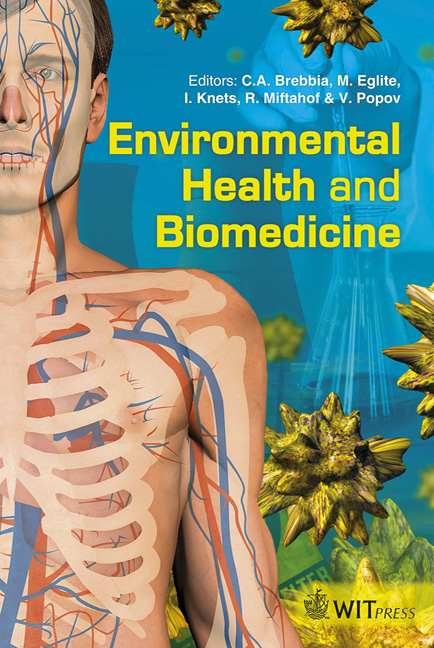Respiratory Toxicity Of Aspergillus Versicolor: The Most Common Indoor Mould In Slovakia
Price
Free (open access)
Transaction
Volume
15
Pages
11
Page Range
135 - 145
Published
2011
Size
3,438 kb
Paper DOI
10.2495/EHR110131
Copyright
WIT Press
Author(s)
E. Piecková, M. Hurbánková, S. Černá, M. Majorošová, Z. Kováčiková & D. Pangallo
Abstract
A mould Aspergillus versicolor clearly dominates in damp and mouldy indoor environments under Slovak dwelling/public building conditions (up to 1/3 of all isolates during the last decade’s surveys). Nearly all of its isolates are able to synthesize a mycotoxin sterigmatocystin (detected by LC/MS-MS), that showed severe in vitro as well as in vivo toxic potential in animal experiments (after intratracheal instillation to rats). In vitro toxicity of complex chloroformextractable endo- and exometabolites of 10 indoor, and related outdoor, A. versicolor isolates from a heavily mouldy kids’ fashion store in Slovakia with complaints from the occupants of irritation of their airways has been evaluated by a bioassay with tracheal organ cultures of one-day old chicks (20 microg of toxicants per mL of cultivation medium). In the in vivo experiments, respiratory toxicity of the same metabolite mixtures was tested in Wistar rats during three days. The inflammatory and cytotoxic biomarkers were then analyzed in bronchoalveolar lavage fluid. Searching for the fungus possible source, molecular epidemiological study of the isolates was performed using RAMP PCR. Strains colonizing the indoor walls of the shop were the highest correlated to the outdoor airborne ones (Pearson correlation 97%). While indoor airborne isolates correlated to the strains growing on retailed clothes at the levels of 90 or 86% according to Pearson. All micromycetes produced secondary metabolites that ceased ciliary beating in tracheal epithelium in the organ cultures already in 24 hrs of the activity, i.e. in the sense of the method used, they belong to strong toxicants. Two of the isolates tested also produced extrolites without toxic effects detectable by the method. The metabolites also showed certain cytotoxic
Keywords
dwellings, dampness, fungal toxic metabolites, airways, intratracheal instillation





